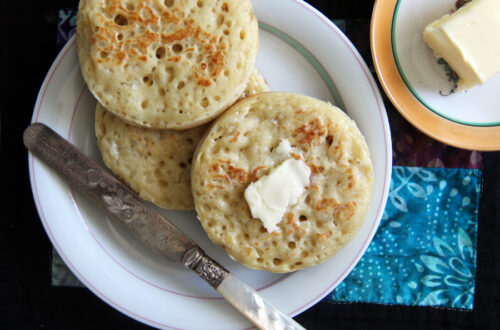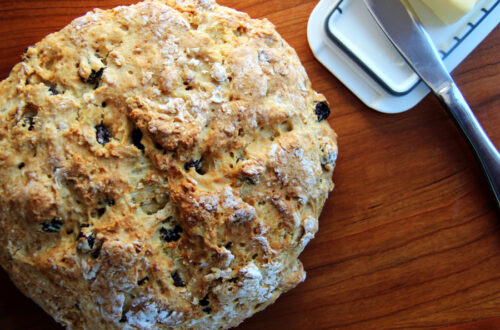The people of India usually enjoy their dishes with either bread or rice—not both. We all can make rice, but how about one of those fabulous Indian flatbreads? Simple whole-wheat chapati, AKA roti, makes a nice holiday from basmati. It puffs up when griddled, then flattens into something like a tortilla. Soft and pliable, it’s perfect for scooping up curries and spreading with chutney. A staple in Indian homes for thousands of years, chapati goes from zero to the table in minutes and fits anybody’s budget.
A couple things make this recipe a keeper. First, you don’t need to buy whole-wheat atta flour, the kind they use in India. You’ll get a wonderfully toasty flavor with whatever whole-wheat flour you have on hand. Why invest in a specialty flour if you can avoid it?
And secondly, a simple little technique—using boiling water instead of cold—helps make the chapati soft and light. The secret to puffy chapati is hydration. Water trapped inside the dough turns into steam on the griddle and creates airy pockets. Since flour can absorb more hot water than cold, the dough retains more moisture for puffing up pockets. This boiling water trick better hydrates the dough and also makes it fun to handle—almost like play dough.
All you need to succeed with this gem is whole-wheat flour, water, a little oil, a dash of salt, and some patience with your rolling pin. Creating uniformly round chapatis takes some practice. Fortunately, odd shapes won’t affect the flavor or texture, and they even possess some charm.
And remember, when you serve chapati, skip the rice.
Chapati, Indian Whole-Wheat Flatbread
Adapted from Indian Family Cookbook by Simon Daley (2012)
Makes 8
Recipe halves easily
- 2 cups whole-wheat flour, plus extra for dusting
- Pinch of salt
- 3 tablespoons vegetable oil
- Boiling water
- Mix flour, salt and oil thoroughly by hand. Add about 1-1¼ cups of boiling water and mix with a wooden spoon or a dough whisk.
- Add a little more boiling water gradually—whatever you need to make a soft, pliable dough. Work the mixture with the wooden spoon or whisk until the dough is cool enough to handle, then knead in the bowl for a minute or so until smooth.
- Divide the dough into 8 pieces. Roll each into a ball, then flatten with your palms into a disk.
- Dust your work surface with flour and put some more into a small bowl. Dip a disk into the flour and roll into an 8” round, without turning over. You may want to stick an edge onto your work surface to make it easier to roll into a round.
- Roll as many as you can fit on your work surface. This will allow them to rest before griddling, which helps them puff up.
- Heat a griddle or skillet on high heat. When hot, place a round of rolled-out dough face-down on the pan. Leave for l0-20 seconds, then flip. You should see light brown spots on the surface of the bread.
- Leave for 30-40 seconds, then flip again.
- Press down on the surface lightly with a spatula or a wadded-up dishtowel (be careful of the hot steam) to get the bread to puff up. Large bubbles should appear. This step shouldn’t take more than 20 seconds—any longer can dry out the bread.
- Place the baked chapati face down on a plate, and repeat with the remaining rolled-out dough.
- Stack breads and cover with a kitchen towel to keep them warm. Serve immediately.
- Freeze leftover breads to keep them fresh, cooling them thoroughly before freezing. Zap briefly in the microwave to reheat.







